League City, TX Pollen and Allergy Report for Summer 2023
Pollen Allergy Trends in League City, TX
When is pollen lowest in League City, TX?

February
Lowest month total PPM
Avg. PPM
When is pollen highest in League City, TX?

March
Highest month total PPM
Avg. PPM
How does pollen in League City, TX compare to Texas?
League City has a higher average PPM than the state of Texas.
League City yearly avg PPM:
Texas yearly avg PPM:
How does pollen in League City, TX compare to the USA?
League City has a higher average PPM than the USA.
League City yearly avg PPM:
USA yearly avg PPM:
Is pollen worse this year in League City, TX?
Spring 2023 was worse than spring 2022.
Spring 2023 PPM:
Spring 2022 PPM:
Average PPM in League City, TX

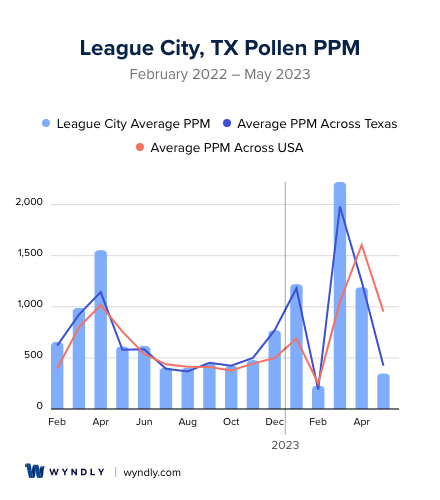
League City, TX Pollen and Allergy Breakdown by Month
Grass
When is grass pollen highest in League City, TX?
April has the highest grass pollen in League City, TX with an average PPM of
When is grass pollen lowest in League City, TX?
December has the lowest grass pollen in League City, TX with an average PPM of
Tree
When is tree pollen highest in League City, TX?
March has the highest tree pollen in League City, TX with an average PPM of
When is tree pollen lowest in League City, TX?
July has the lowest tree pollen in League City, TX with an average PPM of
Weed
When is weed pollen highest in League City, TX?
June has the highest weed pollen in League City, TX with an average PPM of
When is weed pollen lowest in League City, TX?
February has the lowest weed pollen in League City, TX with an average PPM of
League City, TX Pollen Monthly Breakdown by Pollen Type


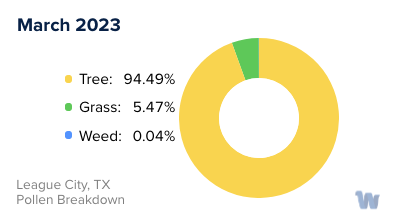


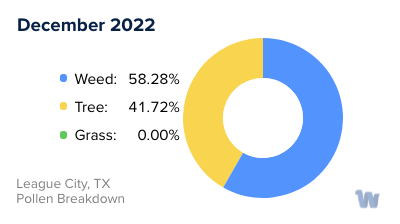
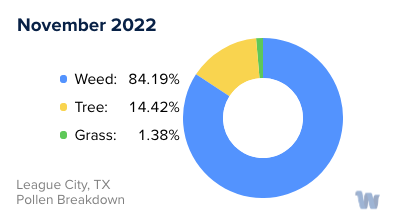

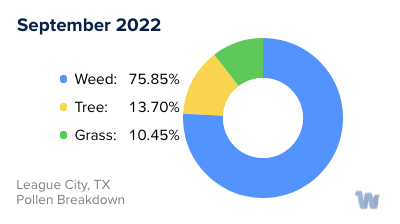
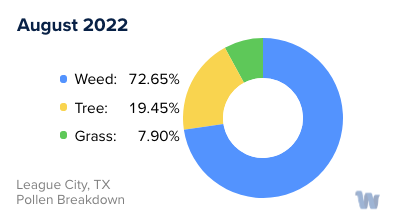
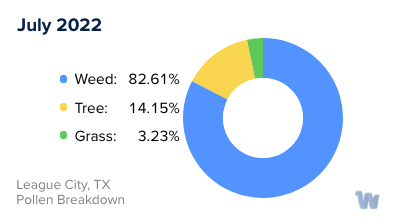
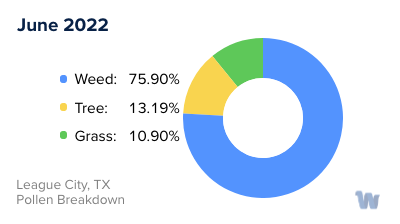
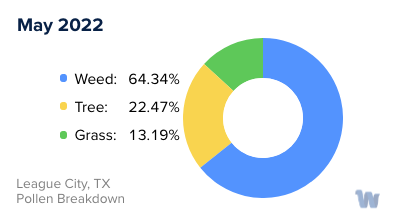
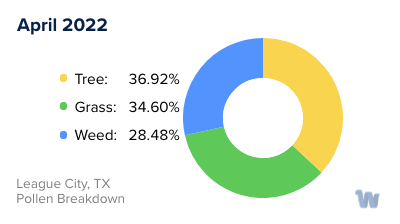
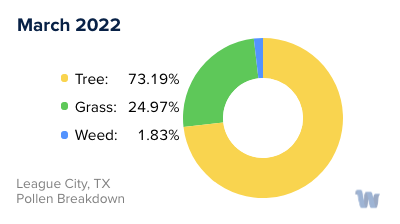
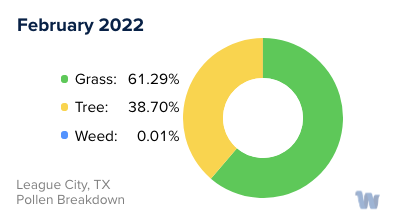
Pollen and Hay Fever in League City, TX
Living in League City, Texas, means enjoying warm weather, a close-knit community, and easy access to both Houston and Galveston. However, it also means grappling with a significant challenge: pollen allergies, or as they are commonly known, hay fever.
The primary culprits in League City are tree pollen, grass pollen, and ragweed pollen. Each type follows its own distinct seasonal pattern, which can vary year by year depending on weather conditions.
Tree pollen often emerges first in the annual cycle. From January to May, residents may notice an uptick in symptoms, especially during peak periods of tree blooming. The usual suspects include elm, ash, and mulberry trees, which are prevalent in the region. Following closely behind is grass pollen. Bermuda, Johnson, and Kentucky bluegrass are particularly widespread in Texas and start releasing pollen from March through May.
Just as tree and grass pollens start to subside, summer offers a brief respite. June and July are often a welcome relief for allergy sufferers, as pollen counts drop significantly. It's an opportune time for residents to enjoy outdoor activities with fewer allergy symptoms.
However, this break is short-lived. Starting in August and continuing until November, ragweed pollen becomes the primary concern. Ragweed, a soft-stemmed flowering weed, thrives in the tropical and subtropical regions of the Americas, including Texas. Its pollen is notorious for causing allergic reactions, often resulting in runny noses, sneezing, itchy eyes, and in severe cases, asthma flares.
Interestingly, as soon as the ragweed season begins to wind down in November, the cycle restarts with the blooming of mountain cedar. This tree is especially common in Central Texas, and while League City is not in the central part of the state, the pollen can travel hundreds of miles, potentially impacting residents.
In conclusion, understanding the patterns of pollen release can be beneficial for those living in League City, Texas. It helps residents anticipate and prepare for the changing seasons, allowing them to manage their daily activities and enjoy the city's many amenities, despite the challenges posed by pollen allergies.


